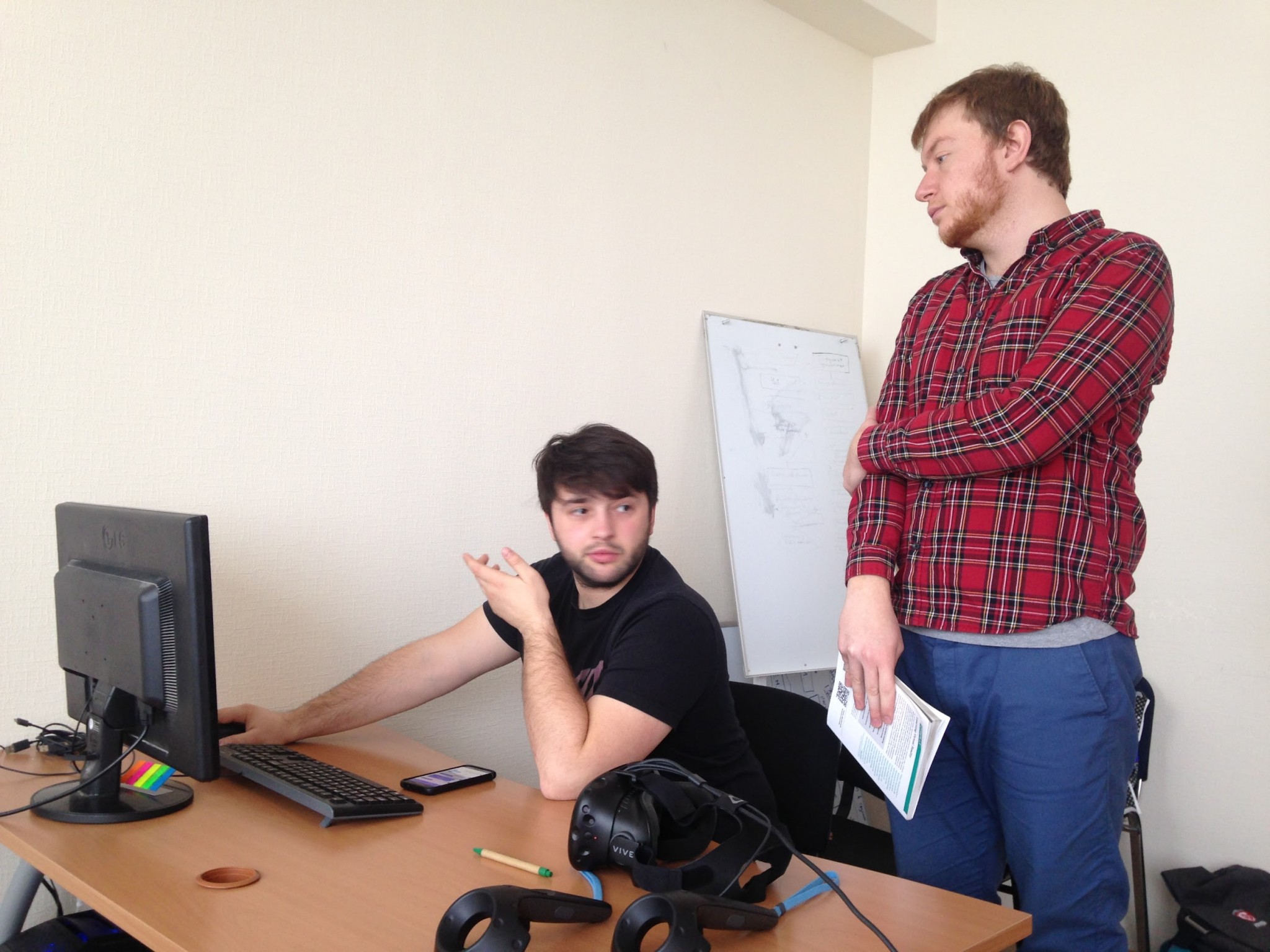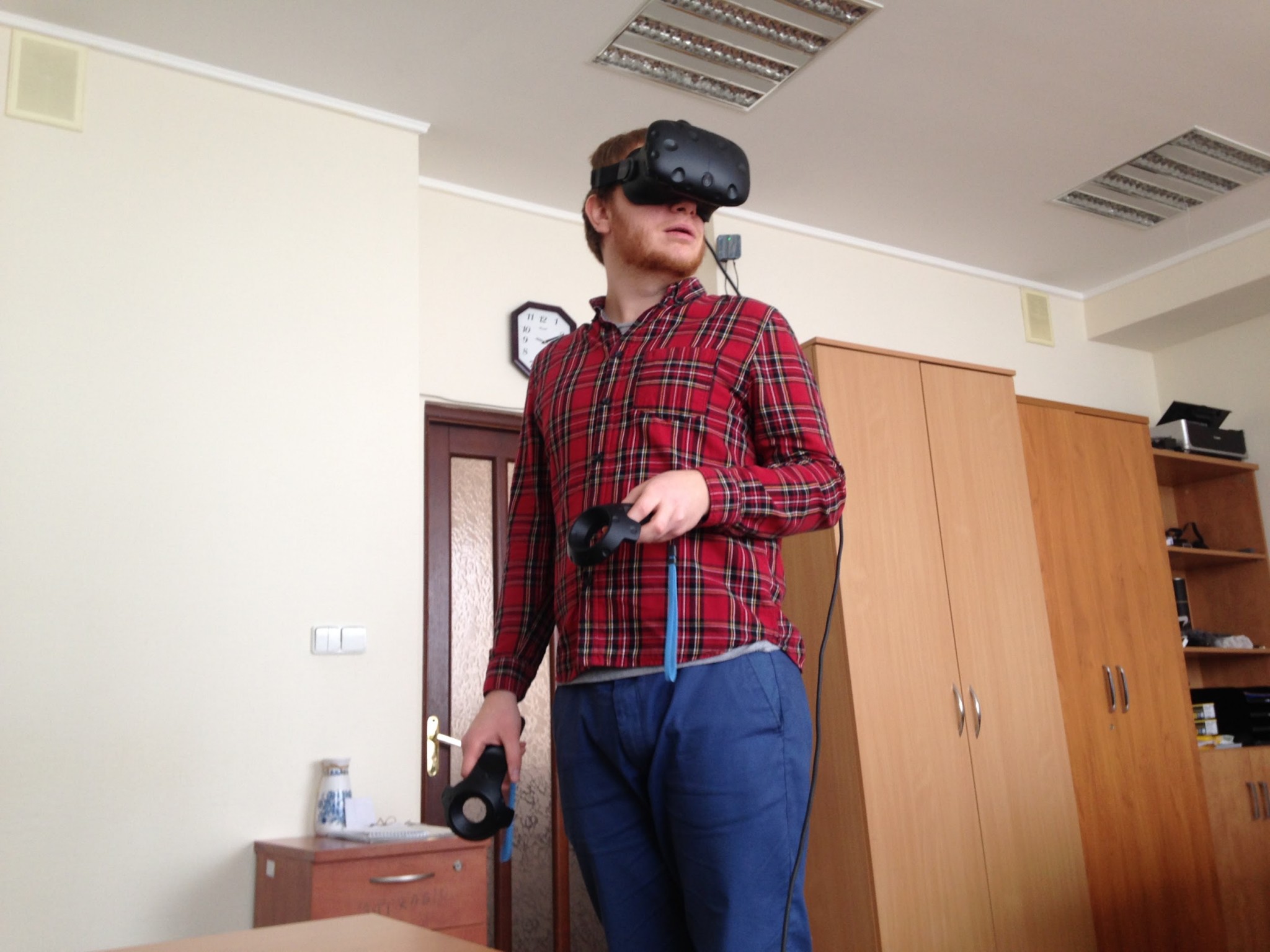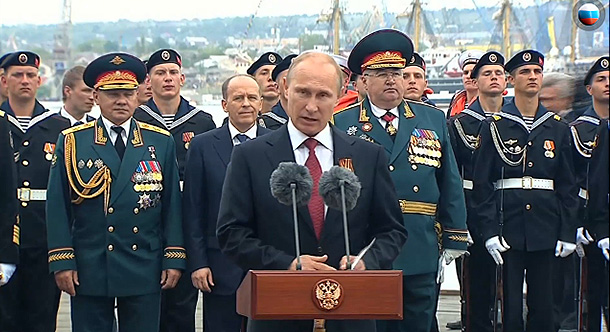Oleksii Furman and Serhiy Polezhaka are two friends and photographers who set the goal to show the world the story of one tragic morning of Euromaidan Revolution using an innovative tool – virtual reality. 20 February 2014 is the day when 47 protesters were killed at Vulytsia Instytutska, which is now renamed to the Heavenly Hundred Lane in honor of those who died during the confrontation on Maidan. The project is called Aftermath VR: Euromaidan.
When it is completed, an ordinary visitor of this virtual experience will be able to walk the lane as it is now and find out the story of that tragic morning using virtual reality glasses. Euromaidan Press talked to Oleksii Furman, the producer of Aftermath VR: Euromaidan, and its director Sergii Polezhaka to reveal the details.
“No one has ever re-created such a large area in virtual reality,” says Oleksii.
For the photographer and his friend, this story is very personal. During the whole revolution they had taken pictures of central Kyiv for different international media. However, Oleksii says that they were attending the revolutionary events not only as journalists, but also as citizens:
“We already realized then that we were witnessing modern history. Even if there were no editorial tasks at some day, I felt calmer being at Maidan. I felt I was in the place I should be.”
After the revolution ended, the photographers dreamt of making a story about Euromaidan using innovative methods. Finally, the idea of the project Aftermath VR:Euromaidan
was born. Now 8-9 people permanently work on it. They received a Journalism 360 Challenge grant from Google News Lab and The Knight Foundation to accomplish it.
“I was fed up with unobjective covering of the event, even if the misinterpretation was not on purpose,” Serhiy explains his desire to create a virtual reality project about Maidan.
He says that the simple desire of photographers to make good shots shapes the entire impression given by an event:
“The purpose of a photographer’s work is to catch the most telling moments from the whole event. For example, in January 2014 during the events on Vulytsia Hrushevskoho [when the first clashes with law enforcements and the protesters had taken place - Ed.] these telling moments where tires, Molotov cocktails, barricades on fire, a black man on the background of yellow fire. Also, it looked incredibly beautiful. So it resonated in the works of many photographers who used approximately the same technical characteristics. As a result, it seemed that the whole city was on fire. In fact, only 30 meters of one street were. This influenced further events. Ukraine’s international partners saw these pictures and had to react. And this influenced what was going on here and so on.”
The director adds that the way how photographers recorded the February killings allowed for Russian propagandists to mix and match the shots to support their interpretation of events, creating a fake story based on real materials.
The authors say that their virtual reality project helps to see the real street at a real scale and the whole picture of what was going on.
“Afterwards, it it would be much harder to fool a person,” concludes Serhii.
How does it look?

A person puts on virtual reality glasses and turns up on the Heavenly Hundred Lane - or, rather, its 3D model - as it appears now. For this, the team scanned the street using the photogrammetry technology. A person walks up the street and sees what was going on there that deadly morning. This is possible due to the archive photos, videos, and scanned artifacts — like helmets, shields, bullets and other fragments of that time.
“The idea is that you are always on the frontline. You repeat the path of the protesters,” explains Oleksii. The photos will appear at the places where something had happened.
“In our work we combine a chronological statistical approach and the approach of a character-driven story,” explains Sergii.
During this virtual trip, a viewer finds artifacts, photos, and videos with explanations from that day. They are also connected to the timing of the events happening on February 20.
“Also, we made 360° video interviews with people who were at Instytutska on 20 February. And we found pictures of these people made by professional photographers on that day. For example, there is a guy who was injured and we have a photo where people provided medical help to him. We combine these stories into one,” goes on Oleksii.
Serhii adds that sometimes they have to complement the virtual picture of how the street looks now:
“For example, if we add the model of a barricade, we explain that it’s important to see it to realize the role it played – on the one hand it sheltered the protesters from bullets, on the other hand it made the pass narrower and obstructed the movement of the protesters.”
The team also plans to use the sounds recorded in the morning of the 20th of February.
“I think despite the value of existing journalistic materials, there are not that many end products using as much information as ours which are told by such innovative methods,” says Oleksii
The difficulties of implementation
The project creators foresee several difficulties. Not all of them are technical.
“For me, that day is the hardest to remember. We all went through it – covering the events we were running under fire which could have killed us as well,” says Oleksii.
“The most shocking sight were the bodies of the killed and injured in the lobby of the hotel 'Ukrayina',” Serhii recalls.
Oleksii adds – that day they did not fully understand what was going on:
“I returned several times, as the confrontation started on 18 February and continued to the 20th. I had no feeling that something terrible happened. We understood that the Berkut [the riot police tasked with pacifying the protesters - Ed] opened fire, but at 10 AM we couldn't estimate the number of victims. I saw that the injured were taken away – some were in a better condition, some had it worse.”
For the project, the photographers had to return to the street where the deadly events had happened for over 100 times. Moreover, for hundred times they had to look over the pictures and videos from that day:
“I have to say that the work on the project helped me to cope with this post-traumatic syndrome,” says Oleksii.
For Serhii this approach is not helpful. He says that when he gets to the street he looks at it from the pragmatic point of view - to do the work for the project. However, it is different when he has to review the pictures from those days:
“I should do it alone during the nights. I still start crying when I see them.”
About 10 photographers and some videographers shared their works for the project. The team expects that more professionals will join:
“We are also looking for more authors who were there that morning. Not that many Ukrainian photographers were there that particular day, up to 20 February, because many of them were shooting on the 18th and 19th, so they went to rest. But there were a lot of western photographers,” says Oleksii.
The primary goal of the project was to create a drone-model of the Heavenly Hundred Lane and the nearby area. The model consists of around 2000 photos. It is just a foundation on which better models shot by SLR cameras will be added. A part of the surfaces were created from scratch.
The final goal

The Museum of the Revolution of Dignity is a partner of the project. Many of its artifacts were scanned for the project, and it will be shown there.
Aftermath VR: Euromaidan can exist anywhere, but requires virtual reality glasses.
“We want to show it all around the world – in museums and on festivals. We also wish our government could use the project during their events abroad.”
Four years after the tragic events of Euromaidan, Oleksii isn’t frustrated in the outcome of the revolution:
“People did not want to live, being oppressed by the corrupted government. And Maidan having started as a pro-European movement, at some moment turned into an anti-governmental one, which is logical. People did not agree with such regressive and pro-Russian moods of the government. Euromaidan continued the fight of Ukrainian people for freedom. These people – the Heaven’s Hundred – continued the Kozaks’ history of the fight for independence. After Maidan, the war continued this fight. I always argue with people who says that Maidan was in vain. We do not know where we would be now if on 20 February things did not happen as they did.”
Serhii agrees that the event was unavoidable and, recalling the way it was covered, says that he wishes that media were calmer when talking about such processes:
“I wish big media with large audiences restrained their emotions. Of course it contradicts people's desires to see the intensity of emotions and it also affects media ratings, however in this case the audience would be able to comprehend what is going on.”
It is planned that Aftermath VR: Euromaidan will be completed in summer 2018 and can be shown to audience for the fifth anniversary of the revolution. Also, the authors aim to make a web version of it.
Read also:
- Euromaidan Press archives: Euromaidan: rebirth of a nation
- One year anniversary of Euromaidan revolution, a 360 degree Virtual Reality tour of Maidan is launched on Google Play



